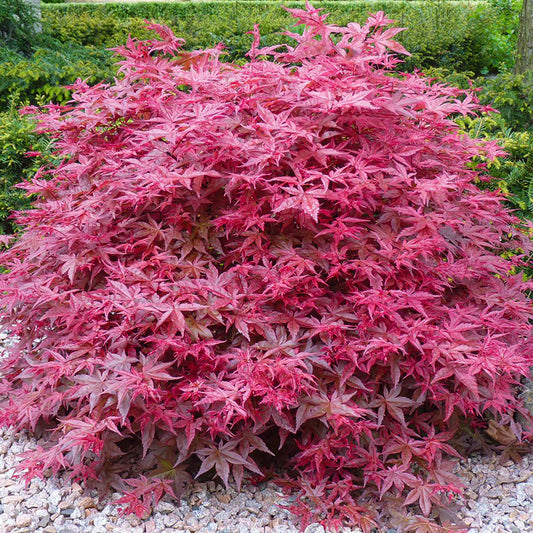Product description
The Betula pendula ‘Royal Frost’ will add an exciting touch to your garden with its distinctive rich burgundy leaves. As autumn approaches, the foliage turns to a fiery orange-red, creating an eye-caching focal point.
Apart from the magnificent hues of the leaves, it astounds with a unique bark that changes colours throughout its life. The young bark starts off as a creamy white shade, then turns to cinnamon and brown as it matures. Yellow catkins form in spring.
Purple Birch is a relatively new hybrid, cultivated in 2006 by pairing the 'Whitespire' with the 'Crimson Frost'. It is suitable for most gardens apart from those that are really pressed for space. Plant next to a lovely water feature to create a me-space. If you have a really large garden, use Purple Birch to line a border wall or stand alongside a driveway. The stunning burgundy leaves against the white bark make an imposing sight!
Offering a tree as a present makes a thoughtful and long lasting memory. The Purple Birch makes a fabulous gift idea for new home owners.
Plant specs, care guide & tips
Key features
Specifications
When to plant
| Jan | Feb | Mar | Apr | May | Jun | Jul | Aug | Sep | Oct | Nov | Dec |
|---|---|---|---|---|---|---|---|---|---|---|---|
Planting and period of interest times are general guidelines and may vary based on your location and conditions. For best results, consult local gardening resources.
Instructions
Top Tip
Prune Betula trees during their dormant period in late autumn or winter to prevent sap loss. Remove dead or damaged branches and thin out the canopy to improve airflow and sunlight penetration. Avoid heavy pruning, as this can stress the tree. Apply a slow-release fertiliser in spring to support healthy growth, and consider planting Betula in groups for a stunning naturalistic effect in your garden.
How to Water
Water newly planted Betula trees deeply and regularly during the first year to establish their root system, especially in dry spells. Mature Betula trees generally require less frequent watering but benefit from additional hydration during prolonged dry periods or hot summers. Ensure the soil remains consistently moist but not waterlogged. Early morning watering is ideal, as it allows excess moisture to evaporate during the day, preventing fungal diseases.
How to Plant
To plant Betula trees, select a sunny or partially shaded location with moist, well-draining soil that is slightly acidic to neutral. Dig a hole twice as wide and just as deep as the root ball. Gently loosen the roots before placing the tree into the hole, ensuring the top of the root ball is level with the ground. Backfill the hole, firm the soil, and water thoroughly to settle the roots. Add a mulch layer around the base to retain moisture and suppress weeds, keeping it a few centimetres away from the trunk to prevent rot.





















